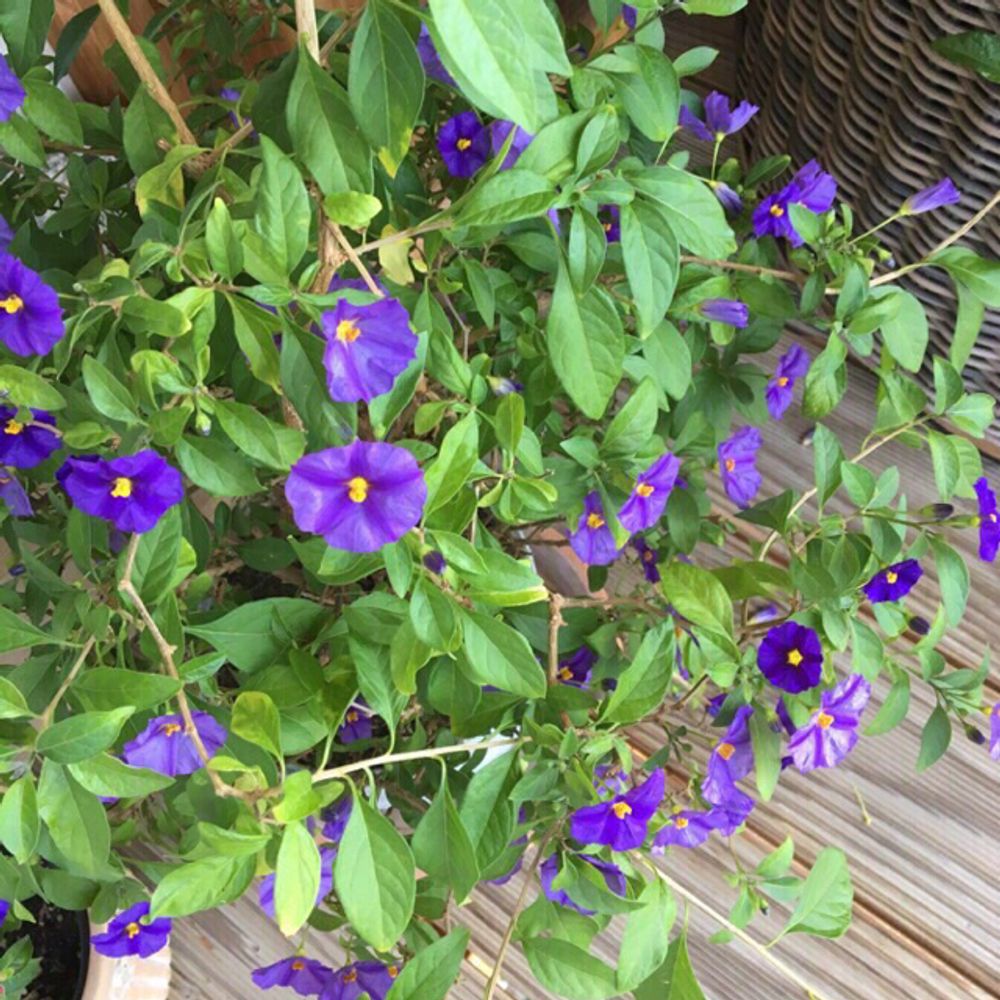Berengena De Paloma
(Lycianthes virgata)

Description
Solanum is a large and diverse genus of flowering plants, which include two food crops of high economic importance, the potato and the tomato. It also contains the nightshades and horse nettles, as well as numerous plants cultivated for their ornamental flowers and fruit.Solanum species show a wide range of growing habits, such as annual and perennials, vines, subshrubs, shrubs, and small trees. Many formerly independent genera like Lycopersicon (the tomatoes) and Cyphomandra are now included in Solanum as subgenera or sections. Thus, the genus today contains roughly 1,500-2,000 species. Solanum comprises herbaceous plants , shrubs , trees or lianas , with or without spines, glabrous or pubescent, with branched or simple hairs, often glandular. In most species, the stem is aerial, circular or angular in cross section. However, there is a group of species within the genus (Petota section) that also has two types of underground stems: rhizomes and tubers , so they are known as tuberous solanum species. The rhizomes are formed by lateral buds more or less long that are born from the base of the aerial stem. They are born alternately from subnudes located in the aerial stems and present a horizontal growth under the surface of the ground. Each rhizome, meanwhile, through a thickening in its distal end, generates a tubercle. These tubers function as a nutrient storage organ. The tubers are covered by an exoderm that appears when the epidermis breaks and thickens with time. On its surface there are “eyes”, subsidence to protect the vegetative buds that originate the aerial stems, which are arranged helically. In addition, there are holes that allow breathing, called lenticels. The lenticels are circular and the number of them varies by unit of surface, size of the tuber and environmental conditions. The tubers may have an elongated, rounded or oblong shape; Its color, meanwhile, can be white, yellow, violet or reddish. The leaves are alternate or paired, simple to pinatilobadas or compound, petiolate or sessile, without stipules. The inflorescence is a peak . The flowers are usually hermaphroditic, actinomorphic or zygomorphic , formed by four cycles of floral pieces, each composed of five members. The chalice is flared, often accretive in the fruit. The corolla is rotated, campanulate, star or urceolada. The color of the corolla can be white, green, yellow, pink, or purple. The stamens may be the same or unequal, the filaments are generally short and inserted at the base of the corolla. The anthers are basifijas and open by terminal pores that often expand to longitudinal openings. The ovaryIt is bi-carpelar, with numerous ovules. The style is articulated at the base, the stigma is capitated. The fruit is a berry , generally globose and fleshy, sometimes ovoid or ellipsoid, but occasionally dry, with many flat seeds. The seeds are surrounded by a mucilaginous substance that prevents germination.
Taxonomic tree:







